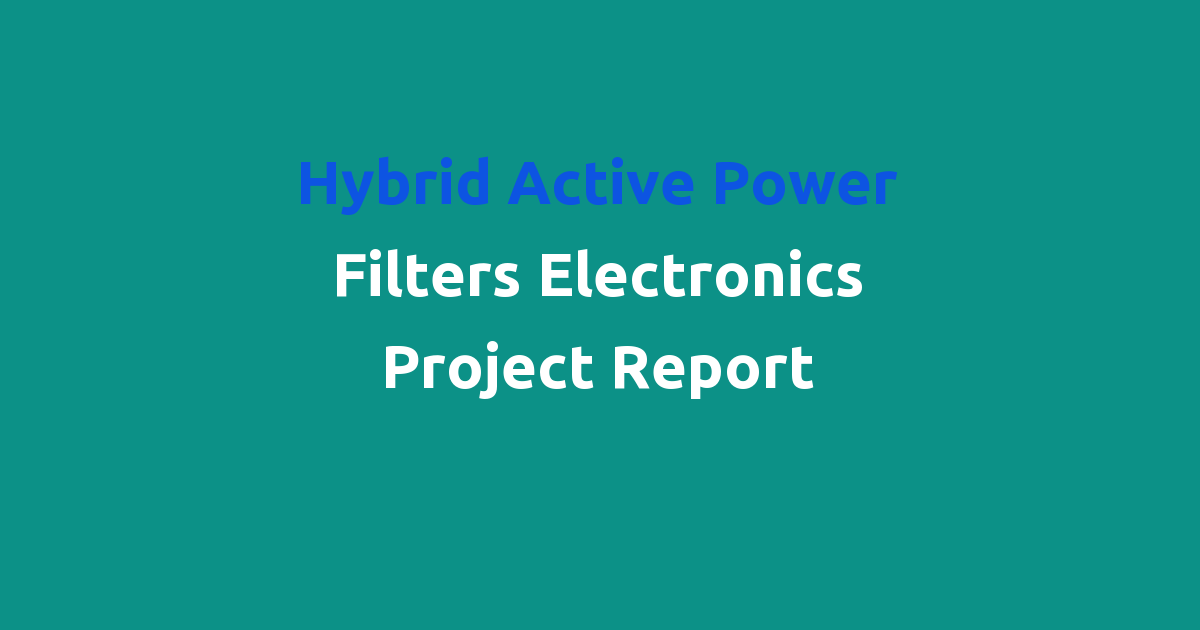Report on project in electronics for hybrid active power filters.
Hybrid Active Power Filters Electronics Project Report
Introduction:
In today’s scenario, the demand for electrical energy is increasing day by day due to industrial growth and urbanization. This has led to a rise in power quality issues such as harmonics, voltage fluctuations, and power factor problems. To address these issues, the concept of active power filters has been introduced. Active power filters are devices that can eliminate harmonics and improve power factor.
Problem Statement:
Although active power filters are effective in harmonic elimination, they have certain limitations. One of the main drawbacks of conventional active power filters is their poor performance under unbalanced and distorted load conditions. This leads to inefficiency and reduced reliability in the power system.
Existing System:
The existing system of active power filters uses either shunt or series configurations. In shunt configuration, the filter is connected in parallel with the load to eliminate current harmonics. On the other hand, in series configuration, the filter is connected in series with the load to eliminate voltage harmonics. However, both configurations have limitations in terms of their performance under varying load conditions.
Disadvantages:
1. Poor performance under unbalanced and distorted load conditions.
2. Inefficiency in harmonic elimination.
3. Reduced reliability in the power system.
4. Limited flexibility and adaptability.
Proposed System:
To overcome the limitations of the existing active power filters, a hybrid active power filter system is proposed. The hybrid active power filter combines the advantages of both shunt and series configurations to achieve better performance under varying load conditions. The proposed system consists of an LCL filter connected in parallel with the load and a cascaded H-bridge converter connected in series with the load.
Advantages:
1. Improved performance under unbalanced and distorted load conditions.
2. Enhanced efficiency in harmonic elimination.
3. Increased reliability in the power system.
4. Greater flexibility and adaptability.
5. Reduced total harmonic distortion (THD) in the power system.
Features:
1. LCL Filter: The LCL filter is used to filter out high-frequency harmonics and suppress voltage ripples in the power system. It provides better harmonic suppression compared to conventional L and LC filters.
2. Cascaded H-Bridge Converter: The cascaded H-bridge converter is used to control the active and reactive power flow in the power system. It allows for precise control of the voltage and current harmonics in the system.
3. Hybrid Configuration: The hybrid configuration of the proposed system combines the advantages of both shunt and series active power filters. This allows for better performance under varying load conditions and improved power quality.
4. Microcontroller-Based Control: The proposed system is controlled by a microcontroller, which allows for real-time monitoring and control of the system parameters. The microcontroller adjusts the switching signals of the converter to maintain balanced and distortion-free power flow.
Conclusion:
In conclusion, the hybrid active power filter system offers a promising solution to the power quality issues faced in modern power systems. By combining the advantages of both shunt and series active power filters, the proposed system provides improved performance, efficiency, and reliability. The use of advanced control techniques and innovative topologies makes the hybrid active power filter system a viable option for enhancing power quality in engineering applications. The effectiveness of the proposed system was validated through simulation studies, which showed significant improvements in power quality parameters such as THD and power factor.

